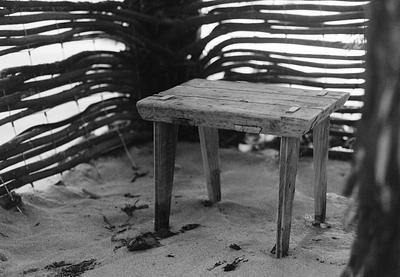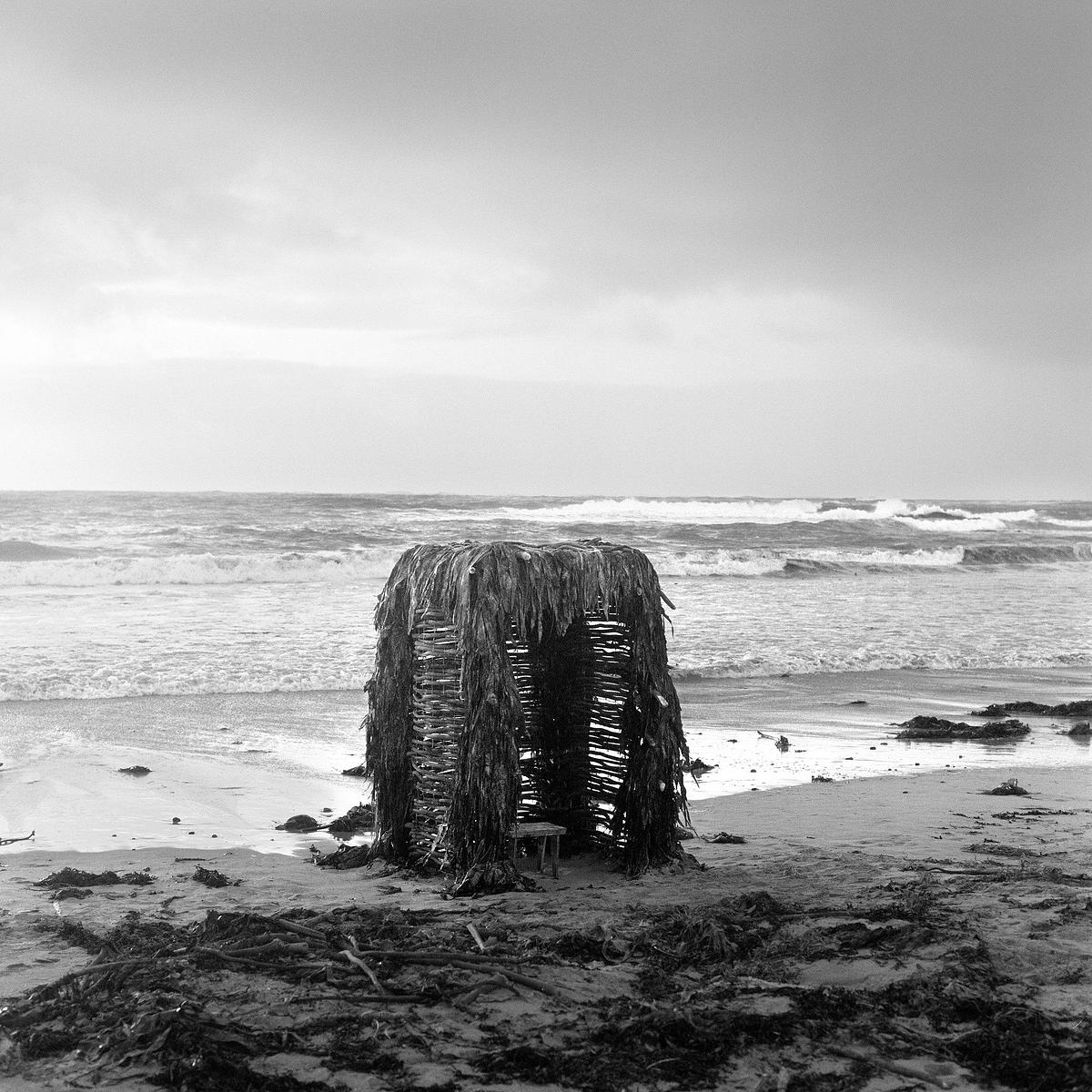
Hebridean weatherlore inspiring new art
Today, we’re guaranteed reasonably accurate weather forecasts, and along with regular news bulletins, countless mobile apps offer unprecedented access to this information – virtually anywhere and at any time.
As I stare at the BBC weather map on the window of my computer screen, it gives cause to wonder how islanders of the past, who mostly made their living from the land and sea, coped.
This is the topic that Calum Ferguson, the latest Tobar an Dualchais/Atlans Arts artist in residence, has been researching and using to create an array of fascinating and inventive objects which he has photographed and reproduced by hand in a small run of striking books.
Calum, a recent graduate of the Glasgow School of Art, returned to his native North Uist during lockdown to complete his degree and then, after graduating, began working with the innovative studio vans venture in Benbecula while also maintaining his croft in Hougharry.
He was selected for the TAD/Atlas Arts residency last July which allowed him to focus more on his own creative work.
This residency aims to foster meaningful engagement with culture and heritage through the exploration Tobar an Dualchais.

As an islander, crofter and surfer, it will be of no surprise that Calum has always kept a keen eye on the weather, and after a period of exploring all sorts of recordings on TAD he settled on weather-lore – an often overlooked but nevertheless fascinating aspect of oral tradition in Scotland.
He began listening to numerous stories, customs and proverbs which were once used to predict the weather, and soon he began to see how closely those in the past observed the world around them, looking, listening, feeling.
They understood the weather patterns in their own way and steadfastly believed in their ability to interpret the weather using means that may have been passed down through the generations since, perhaps, ‘on toiseach an t-saoghail.’
Calum noted: “Whether based in proven scientific rhetoric, blind luck or otherworldly powers, the weather-lore of the Highlands and Islands once held the same certainty as the online tables and charts which now often take their place.”
Iain MacIver (TAD ID: 33051), for instance, explains how weather could be forecasted by observing the birds, tides, the daybreak, the hills and the Northern Lights.
He says if you see a seagull fluttering up above with its wings wide open, instead of down low, that bad weather is on its way. It is typical for those relaying information like this attest their veracity by way of an anecdote. Iain MacIver goes on to say:
“Chuala mi m’ athair ag ràdh, nuair a bha bàthadh mòr Nis ann, gun robh bodach ann am Bhaltos agus gun tàinig e a-nuas chu a’ chidhe, is nach robh ach aon sgòth bheag ri fhaicinn air an adhar anns an àird an ear-thuath, gun tuirt e: ‘Cha tèid sibh a-mach an-diugh.’ … Dh’fhalbh iad madainn bhrèagha le reothadh ann. ’S e glè bheag aca a fhuair air ais chun a’ chladaich.” (TAD ID: 33275)
“I heard my father say, when the great Ness drowning happened, that there was an old man in Valtos and that he came up to the pier, and that there was not but a single small cloud to be seen in the sky in the high north-east, and he said, ‘You wouldn’t go out to sea today.’ …
“They left on that beautiful frosty morning. Very few of them made it back to shore.”
Many of the recordings like this highlight of the significance of seemingly unimportant features – a small solitary cloud in an otherwise clear sky, for example.
They may also contain added proverb-like elements such as the importance of heeding the words of an elder and risking catastrophic consequences if ignored as happened, we are told, in the last critical moments before the younger men set out to sea.
Another story, this one from Tiree and told Donald Sinclair, has a similar feel.
“This day they were out fishing there… and it came on very dark with fog. Well, they couldn’t see shore, and there was one man in the boat… and he looked at the sea and he said to the steersman: ‘Do you know where we are?’, ‘No,’ he says. ‘Well, you’re at Cràiginis – that’s at the north-west corner of Tiree…
“I can make it out by the way the stream is going here, and I would advise you to turn about, because I know the stream well.’ And he altered course… Wasn’t he a sensible man, the man that knew the current?” (TAD ID: 65645)
In that same recording Donald discusses the word ‘glaodhadh’ which was used to describe the sound of the waves roaring on the shore at night.
If this was heard there was sure to be a gale on the way. (TAD ID: 65645)
The arrival and departure of certain bird species across the Islands is often referenced as different omens of weather, harvests or various events to come.
In this recording from Shetland (TAD ID: 66840) Bruce Henderson recalls how variations in the Red Throated Diver’s call would signal incoming rain or periods of dry weather.
“There’s a bird, the red throated diver. You’ve heard of her? Well we call her the ‘rain goose’… what she says when there is going to be good weather is “Droughtowerall, droughtowerall, droughtowerall,” and what she says when it is going to change and be wet weather: “Waarweatherandwaarweet, waarweatheranwaarweet, ”.
Well if you pay attention to her properly you’ll swear that’s what she’s saying, and they said:
”When the rain goose gings tae tha hill,
Let aa man put doon his boats an fill.
When da rain goose gings tae da sea,
Let aa man pull up his boats an flee.”
Recordings like these inspired Calum to create a series of temporary objects in the landscape around North Uist.
In photographing them he captured a particular moment, angle and memory of each of them.
His images are, in effect, like fragments of the recordings which most resonated with him and highlight particular proverbs, stories and sayings connected with forecasting the weather.
His work aims to create a dialogue between the viewer and the objects, pulling into focus a heightened sense of awareness of the natural world around us; something which is often lost on us today but was omnipresent and essential for survival not that long ago.
It has been a pleasure having Calum working with us at Tobar an Dualchais.
He has shown, once again, how our preserved oral heritage continues to have meaning and relevance and can still serve as a precious source of inspiration.